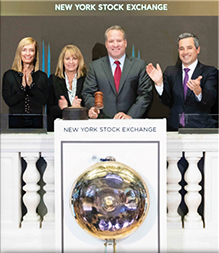It’s no secret that Health Savings Accounts (HSAs) are intended to help with the burden of medical costs, allowing the account holder to contribute pre-tax dollars to pay for qualified medical expenses with tax-free distributions, but an HSA can also be used strategically in planning for retirement. Some HSA account holders opt not to make withdrawals from the HSA account and instead treat it like another IRA account. If you are enrolled in a High Deductible Health Plan (HDHP) and are eligible for a Health Savings Account, it is prudent to consider the benefits of such an account for retirement.
As contributions are made into the HSA year over year, there is the option to invest the funds to earn returns and potentially increase the overall account balance. Similar to retirement accounts, HSAs have contribution limits. These limits are based on whether the high deductible health plan is for a single person plan or a family plan. A single person in 2024, has a contribution limit of $4,150 while those who participate in a family plan are limited to $8,300. These limits increase by a catch up amount of $1,000 for those age 55 and older. Unlike retirement accounts, you do not have to have earned income to contribute to a health savings account allowing you to lessen your tax burden even into retirement. Contributions can be made, pre-tax, until enrollment in Medicare.
Contributions into an HSA are made using pre-tax dollars while eligible distributions are taken tax-free. The comprehensive list of eligible expenses is expanding with each new legislation and covers items ranging from expensive medical treatments to cotton balls, and dentistry expenses to gym memberships. While qualified distributions at any time are tax-free, non-qualified withdrawals prior to age 65 come with a hefty 20% tax penalty on top of being taxed as regular income according to ordinary tax rates.
Funds within the Health Savings Account do not have to be used during the year the contribution is made and there is no time requirement for when the assets would be required to be distributed. Although HSAs cannot be used to pay for employer insurance premiums or premiums for insurance purchased on marketplace, receipts for eligible medical costs can be submitted indefinitely so long as they were incurred after the HSA was established. By holding eligible expenses for reimbursement only after retirement has begun, but prior to reaching age 65, these funds can be utilized in early retirement to live off of along with non-retirement account savings. In doing this, money can be moved from a traditional IRA or traditional 401(K) into a Roth IRA via a Roth Conversion. This is done without going into a higher tax bracket while income is lower than it was during working years. Even after age 65, Roth Conversions can still be utilized as a tax planning tool since HSA withdrawals are then allowed penalty free, keeping in mind that non-eligible withdrawals are still taxed as ordinary income and can lessen the lower tax-bracket Roth Conversion amounts.
If retirement prior to 65 is not something being considered, contributions to an HSA, may still be feasible as long as Social Security and Medicare benefits are not being received. By pushing retirement to age 65 or later, social security income benefits can be delayed and maximized. Once filing for Social Security has begun, enrollment in Medicare at age 65 is automatic. Medicare has certain time frames and guidelines for enrollment that must be adhered to in order to avoid penalties. By continuing to work and being insured under a current job-based insurance, Medicare enrollment can be delayed without penalty until retirement.
.
Click here to read more of my RetireMint articles. Follow me on Twitter.
This document is for educational and informational purposes only and does not constitute an advertisement or solicitation of any securities or investment services provided Mainstay Capital Management, LLC (“MCM”). This document should not be construed as investment, tax, or legal advice, or a solicitation, or a recommendation to engage in any specific strategy. MCM is an independent investment adviser registered with U.S. Securities and Exchange Commission. MCM specializes in workplace savings plan portfolio management and retirement planning advice for active employees and retirees. This document was prepared by MCM primarily based on data collected and analyzed by MCM. The opinions expressed herein are those of MCM alone and are for background purposes only. MCM does not purport the analysis to be full or complete or to constitute investment advice and should not be relied on. In addition, certain information contained herein or utilized to draw the conclusions contained herein has been provided by, or obtained from, third party sources. While MCM believes that such sources are reliable, it cannot guarantee the accuracy of any such information and does not represent that such information is accurate or complete. All materials and information are provided “as is” without any express or implied warranties by MCM. MCM charges its fee based on a percentage of assets under management, which creates an incentive and conflict of interest to increase assets in that account. Furthermore, MCM has two different fee schedules, and therefore has a conflict of interest when assets or accounts move from the lower fee schedule to the higher fee schedule. Opinions expressed are subject to change without notice and are not intended as investment advice or to predict future performance. Consult your financial professional before making any investment decision. Please see MCM’s Form ADV Part 2A and Form CRS for additional information.







